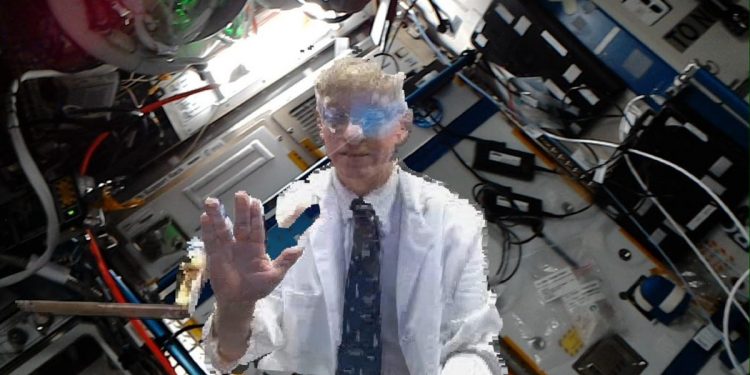NASA flight surgeon Josef Schmid flashes a famous ‘Star Trek’ gesture Oct. 8, 2021, as he is … [+]
ESA (European Space Agency) astronaut Thomas Pesquet
A NASA flight surgeon explored the strange new world of holoporting during a recent (virtual) journey to space.
While stuck on Earth with the rest of us, Josef Schmid’s team were the first human beings to become a hologram on the International Space Station in October 2021. Naturally, he had to flash the famous “Live Long And Prosper” sign from Star Trek in orbit while he was “up there.”
“This is completely new manner of human communication across vast distances,” Schmid said in a recent press release from NASA, which revealed the out-of-this-world visit with astronauts earlier this month. Schmid is no stranger to innovative exploration, in fact, as he also went on the underwater NEEMO (NASA Extreme Environment Mission Operations) space simulation mission in 2007 alongside other astronauts.
NASA flight surgeon Josef F. Schmid participates in a session of extravehicular activity (EVA) for … [+]
NASA
But Schmid said holoporting is a benefit as you don’t need to go very far to make your presence heard in other places. “It is a brand-new way of human exploration, where our human entity is able to travel off the planet. Our physical body is not there, but our human entity absolutely is there,” Schmid said. (No word yet on how holoporting compares to the metaverse, which is the option available to more of us right now.)
Happily, Schmid’s visit to the space station was a test of Microsoft Hololens technology and not an emergency medical visit, like what the USS Voyager astronauts often required through their friendly (yet comical) Emergency Medical Holographic program.
That said, this doctor’s visit was no virtual joyride, as the COVID-19 pandemic has illustrated the problems of giving medical care to people stranded in remote communities far from doctors, during a situation in which travel may be even more dangerous than usual. And there are other situations in which this kind of communication would be useful, NASA said.
“Whether in other extreme environments such as Antarctica, offshore oil rigs or military operation theaters, this type of technology may help people in such situations communicate, bringing people together no matter the distance or environmental challenges,” the agency noted.
NASA plans to continue tests on the space station in pursuit of medical options for the moon and Mars, the agency added. They plan to combine holoporting with augmented reality scenarios to give even more remote assistance to astronauts during medical or engineering work.
Source by www.forbes.com

